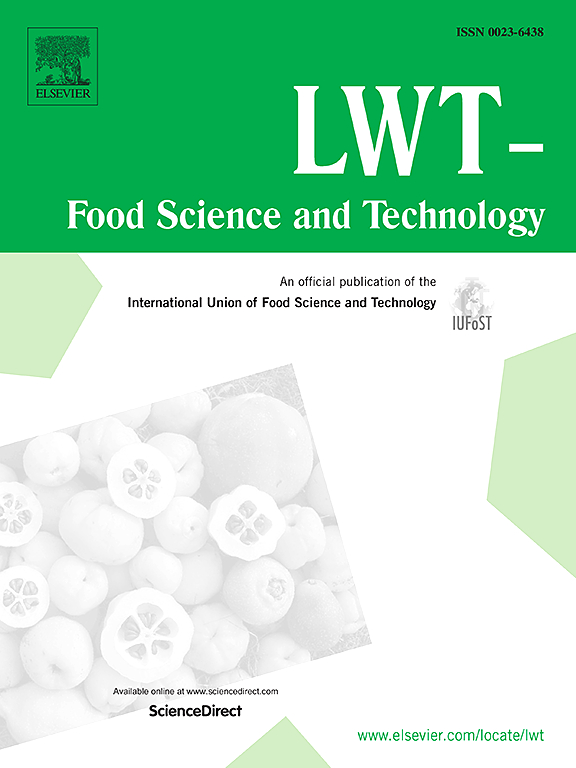Starter culture design for the development of a novel lupin-based quark with in situ vitamin B12 fortification
IF 6
1区 农林科学
Q1 FOOD SCIENCE & TECHNOLOGY
引用次数: 0
Abstract
Due to its high fibre and protein content and suitability for sustainable production, lupin beans (Lupinus albus) are an excellent plant-based ingredient to produce fermented dairy alternatives such as quark. We designed two types of starter cultures containing lactic acid bacteria (LAB) and/or propionic acid bacteria to ferment lupin paste into a novel plant-based quark with tailored functionalities such as (i) quark-like characteristics and (ii) presence of vitamin B12. Optimal quark-like characteristics were achieved with mixed-cultures of Lactiplantibacillus plantarum with Lactococcus lactis or Lactococcus cremoris. Compared to single strain cultures, the mixed-cultures resulted in faster acidification, higher bacterial counts, and more organic acids. Furthermore, the mixed-cultures produced a higher concentration of the buttery aroma compound acetoin, reduced the beany off-flavour volatile hexanal, and increased the umami-tasting glutamate and aspartate levels. A second starter culture, consisting of LAB and the vitamin B12-producing species Propionibacterium freudenreichii, resulted in elevated levels of vitamin B12 of 2.0 μg/100 g fresh lupin quark, independent of LAB species while retaining similar quark-like attributes. These findings highlight the potential of these starter cultures to use for lupin-based quark alternatives.
用原位维生素B12强化的新型羽扇豆素夸克的发酵剂设计
由于其高纤维和蛋白质含量以及可持续生产的适用性,lupin beans (Lupinus albus)是一种极好的植物性成分,用于生产发酵乳制品替代品,如夸克。我们设计了两种含有乳酸菌(LAB)和/或丙酸菌的发酵剂,将露平膏发酵成一种具有定制功能的新型植物夸克,如(i)夸克样特征和(ii)维生素B12的存在。植物乳酸菌与乳酸乳球菌或乳酸菌混合培养获得了最佳的夸克样特征。与单一菌株培养相比,混合培养导致酸化更快,细菌数量更高,有机酸更多。此外,混合培养产生了更高浓度的黄油香气化合物乙酰素,减少了重味的挥发性己醛,增加了鲜味的谷氨酸和天冬氨酸水平。由乳酸菌和产生维生素B12的弗氏丙酸杆菌组成的第二种发酵剂培养,使乳酸菌的维生素B12水平提高到2.0 μg/100 g新鲜罗平夸克,与乳酸菌种类无关,但保持了类似夸克的特性。这些发现突出了这些发酵剂培养物用于羽扇豆素为基础的夸克替代品的潜力。
本文章由计算机程序翻译,如有差异,请以英文原文为准。
求助全文
约1分钟内获得全文
求助全文
来源期刊

LWT - Food Science and Technology
工程技术-食品科技
CiteScore
11.80
自引率
6.70%
发文量
1724
审稿时长
65 days
期刊介绍:
LWT - Food Science and Technology is an international journal that publishes innovative papers in the fields of food chemistry, biochemistry, microbiology, technology and nutrition. The work described should be innovative either in the approach or in the methods used. The significance of the results either for the science community or for the food industry must also be specified. Contributions written in English are welcomed in the form of review articles, short reviews, research papers, and research notes. Papers featuring animal trials and cell cultures are outside the scope of the journal and will not be considered for publication.
 求助内容:
求助内容: 应助结果提醒方式:
应助结果提醒方式:


